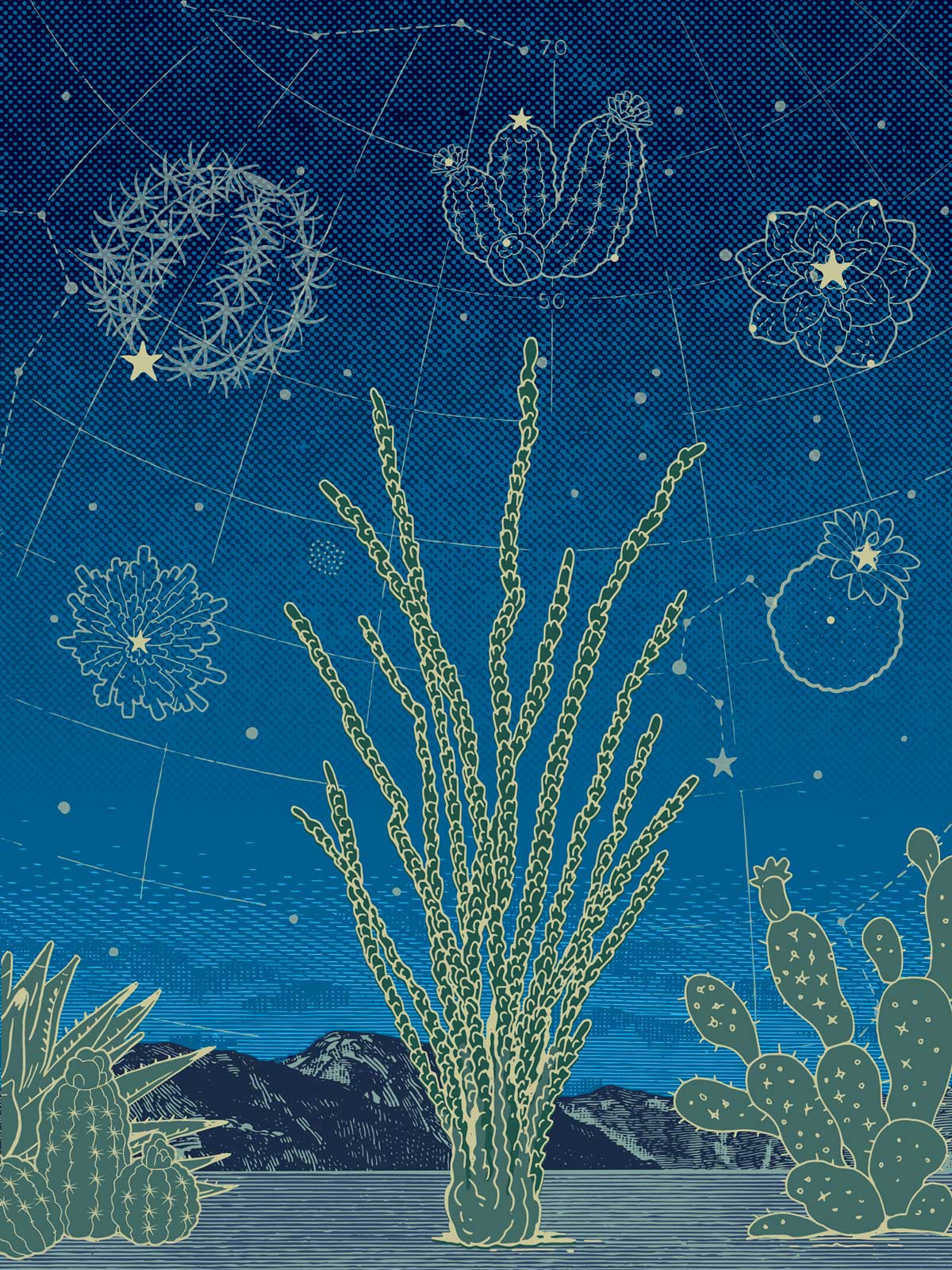Clouds rolled in the evening before a star party at McDonald Observatory in far West Texas, changing my plans for a summer night in Big Bend.
This was years ago, when a weeklong writers’ retreat had taken me to Alpine, where I stayed in the dorms of Sul Ross State University. In our free time, the other writers and I explored the nearby Chihuahuan Desert Nature Center, marveled at the Marfa Lights, hiked to a hilltop at sunrise and drank wine at sunset in the Holland Hotel courtyard.
That night, my colleagues stuck with their itinerary for stargazing, but I stayed behind to tour the grounds at Sul Ross. A cactus garden in front of Lawrence Hall beckoned me to look down instead of up.
The demonstration garden showed off some of the flora produced by the university’s native plant propagation program that has been in operation since 1979. Cactuses were used for decoration and scientific investigations.
The garden showcased about 100 species of promising and already established native ornamentals. From the towering ocotillo scratching at the sky to the diminutive golf ball cactuses, the desert environment nurtures a variety of spiny succulents. The range of prickly pears alone amazed me—some with spines, others “blind”; some with round pads and others pointy; some towering and others cowering.
The cactuses’ shapes and names captured my imagination. The resurrection plant resembled a crown of thorns. The living rock cactus looked like a tortoise shell buried in dirt. The eagle-claw cactus carried curved, talonlike needles.
Several cactuses were familiar. I’d seen the horse crippler, a sneaky low-lying succulent with merciless spikes, at what would become Garey Park in Georgetown. The claret cup reminded me of the Judge Roy Bean Visitor Center in Langtry that features a walking trail arrayed with native plants. Seeing ephedra took me back to the Davis Mountains, where I first recognized the medicinal plant.
Instead of studying the star-studded sky, I gazed at the spine-studded ground and gained an appreciation for the “stars” of this Earth.
The experience inspired the landscape around my home in Central Texas. I planted knobby, white mammillaria in the crevices of a large limestone landscaping rock. I used blue agave harvested from a construction site and white-striped agave to grace my meandering crushed granite pathways.
They reminded me that gazing at the ground can be just as awe-inspiring as gazing at the stars.



